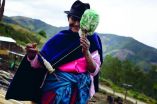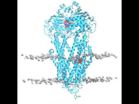(Press-News.org) New research led by NYU Langone Medical Center has uncovered why a particular strain of Staphylococcus aureus -- known as HA-MRSA -- becomes more deadly than other variations. These new findings open up possible new pathways to vaccine development against this bacterium, which the Centers for Disease Control and Preventions says accounts for over 10,000 deaths annually, mostly among hospital patients.
In a series of experiments in mice and in human immune cells in the lab, recently published in the journal Nature Communications online Sept. 2, the NYU Langone team found that the presence or absence of dueling toxins, or bacterial poisons, appears to explain the major difference between HA-MRSA, and its less virulent and more common, community based-based cousin, CA-MRSA, the two main types of MRSA infection.
Specifically, the researchers say, a key toxin, called LUK-PV, secreted only by community-acquired MRSA, counteracts the effects of another more deadly toxin, LUK-ED, secreted by both forms of the bacterium.
Researchers say both LUK-PV and LUK-ED are leukotoxins that target and poison immune system white blood cells meant to fight the bacterial infection, but LUK-PV is only secreted by community-acquired MRSA, or methicillin-resistant S. aureus.
According to study senior investigator and NYU Langone microbiologist Victor Torres, PhD, the newly discovered competing or "antagonistic" relationship between the two bacterial toxins helps explain how community-acquired MRSA is far more widespread and less deadly than hospital-acquired MRSA.
"Essentially, in community-acquired MRSA, the toxins neutralize each other, while in the hospital superbug form, they do not," says Torres.
Torres also says that these study results challenge the current mindset for finding a vaccine against Staphylococcal infections, including MRSA.
"No longer can we take an isolated approach of trying to target and block one leukotoxin at a time," says Torres, an associate professor at NYU Langone. "We have to take a broader view of the pathogen and will likely have to target more than one toxin in order to develop an effective vaccine,"
In a separate set of laboratory experiments previously described in the journal Cell Host & Microbe online Aug. 27, researchers at Torres' laboratory and colleagues in the Netherlands, France, and Australia showed how LUK-ED attacked red blood cells to obtain nutrients, most notably iron, essential for its rapid growth and infection. The international team found that the toxin split apart the red blood cells by attaching itself first to their so-called Duffy antigen protein receptor, the same receptor widely known to be targeted by the human Plasmodium malarial parasites.
Torres says his research is making clearer that multiple bacterial toxins, such as the five known to be contained in community-acquired MRSA, react very differently on their own than when combined -- because they can counteract each other.
His team next plans to analyze the biological mechanisms by which LUK-PV and LUK-ED target, attach and destroy white and red blood cells, making their host more vulnerable to infection. Other experiments are set to determine how widespread bacteremia from Staphylococcal infections actually shuts down the mammalian body, causing death.
Torres also has plans to study groups of Africans known to be genetically deficient in Duffy antigens and, hence, more resistant to malaria, to see if they are resistant to Staphylococcal infection, as well.
INFORMATION:
Funding support for both studies, which took four years to complete, was provided by the National Institute of Allergy and Infectious Diseases, a member of the National Institutes of Health. Corresponding grant numbers are R01 AI099394 and R01 AI105129. Additional study funding support was provided by the Burroughs Wellcome Fund.
Under a licensing agreement between New York University and Janssen Biotech Inc., of Horsham, Pa. (a subsidiary of pharmaceutical manufacturer Johnson and Johnson, of New Brunswick, NJ), Torres is entitled to a share of commercialization revenue received by the University on the development and sales of products tied to development of a Staphylococcal vaccine or toxin inhibitors, in addition to research funds. The terms of these arrangements are being managed by NYU in accordance with its conflict of interest policies.
Besides Torres, other NYU Langone scientists involved in this research were Pauline Yoong, PhD; Tamara Reyes-Robles, PhD; and Kristina Boguslawski, PhD. Additional research support was provided by Andras Spaan, PhD; Cedric Badiou, PhD; Francois Vandenesch, PhD; and Thomas Henry, PhD, at the Centre de Recherche en Infectiologie, in Lyon, France; and Carla de Haas, PhD; Kok van Kessel, PhD; and Jos van Strijp, PhD, at the University Medical Center in Utrecht, the Netherlands; and Sylvie Cochet, PhD; Caroline Le Van Kim, PhD; Yves Colin, PhD, at the Institut National de la Sante et de la Recherche Medicale, in Paris; and Christopher Day, PhD; and Michael Jennings, PhD, at Griffith University in Gold Coast, Australia.
Media Inquiries:
David March
Phone: 212-404-3528
david.march@nyumc.org
Almost half of the risk of developing testicular cancer comes from the DNA passed down from our parents, a new study reports.
The research suggests genetic inheritance is much more important in testicular cancer than in most other cancer types, where genetics typically accounts for less than 20 per cent of risk.
The findings suggest testing for a range of genetic variants linked to testicular cancer could be effective in picking out patients who are at substantially increased risk - potentially opening up ways of preventing the disease.
Scientists at The Institute ...
UK enters top ten
All regions of world represented in lower rankings
Experts call for more age specific data about older people's lives
Switzerland is the best place in the world for older people to live, closely followed by Norway and Sweden, according to a new report from HelpAge International, working in partnership with the University of Southampton.
The Global AgeWatch Index assesses the social and economic wellbeing of the older population in 96 countries around the world. The Index represents 91 per cent of the world's population aged 60 and over, amounting ...
Wildfires have ravaged regions of Southern California at an increasing rate over the past few decades, and scientists from three University of California campuses and partner institutions are predicting that by mid-century, a lot more will go up in flames.
In research published today in the journal Environmental Research Letters, the scientists discuss the split-personality nature of Southern California wildfires. They describe two distinct wildfire regimes, those driven by offshore Santa Ana winds that kick up in the fall and non-Santa Ana fires that result primarily ...
Irvine, Calif., Sept. 8, 2015 - Wildfires have ravaged both populated and unpopulated regions of Southern California at an increasing rate over the past few decades, and scientists from three University of California campuses and partner institutions are predicting that by midcentury, as a consequence of climate change causing hotter and drier summers, a lot more will go up in flames.
In a paper published today in the journal Environmental Research Letters, the scientists discuss the split-personality nature of Southern California wildfires. They describe two distinct ...
Bloggers may accept compensation and free products for reviews, but freebies do not necessarily lead to positive endorsements, according to a group of researchers.
In a study, most technology bloggers who have accepted compensation, including free products, for reviews actually reported that they feel more empowered in their relationships with companies that pitched them products, rather than feeling indebted to them.
"We were concerned with how accepting compensation or products impacted how control mutuality -- where both groups feel that they are winning from the ...
Imagine creating artificial plants that make gasoline and natural gas using only sunlight. And imagine using those fuels to heat our homes or run our cars without adding any greenhouse gases to the atmosphere. By combining nanoscience and biology, researchers led by scientists at University of California, Berkeley, have taken a big step in that direction.
Peidong Yang, a professor of chemistry at Berkeley and co-director of the school's Kavli Energy NanoSciences Institute, leads a team that has created an artificial leaf that produces methane, the primary component of ...
As early humans increasingly left forests and utilized tools, they took an evolutionary step away from apes. But what this last common ancestor with apes looked like has remained unclear. A new study led by researchers at UC San Francisco shows that important clues lie in the shoulder.
Humans split from our closest African ape relatives in the genus Pan - including chimpanzees and bonobos - 6 to 7 million years ago. Yet certain human traits resemble the more distantly related orangutan or even monkeys. This combination of characteristics calls into question whether the ...
New research shows that high levels of ozone, which are predicted to increase in the atmosphere in the future, can dampen the scents of flowers that attract bees and other pollinators.
High ozone concentrations in ambient air caused fast degradation of the scent emitted from Brassica nigra flowers, reducing the range over which flowers could be identified by pollinators. Behavioral tests conducted with the buff-tailed bumblebee confirmed that ozone concentrations commonly occurring near large urban areas can strongly inhibit pollinators' attraction to flowers.
?"The ...
Drugs important in the battle against cancer responded the way they do in real life and behaved according to predictions when tested in a computer-generated model of one of the cell's key molecular pumps -- the protein P-glycoprotein, or P-gp.
Biologists at Southern Methodist University, Dallas, developed the computer generated model to overcome the problem of relying on only static images for the structure of P-gp, said biologist John G. Wise, lead author on the journal article announcing the advancement.
The new SMU model allows researchers to dock nearly any drug ...
Tropical forests are home to more of the world's terrestrial biodiversity than any other habitat, but are increasingly threatened by the impact of human activities. Illegal logging, in particular, poses a severe and increasing threat to tropical forests worldwide. But, until now, its impact on tropical wildlife has not been quantified.
A new study co-authored by scientists at Drexel University, published in the most recent issue of Biological Conservation, reveals the devastating impact of illegal logging on bird communities in the understory layer of Ghana's Upper Guinea ...


